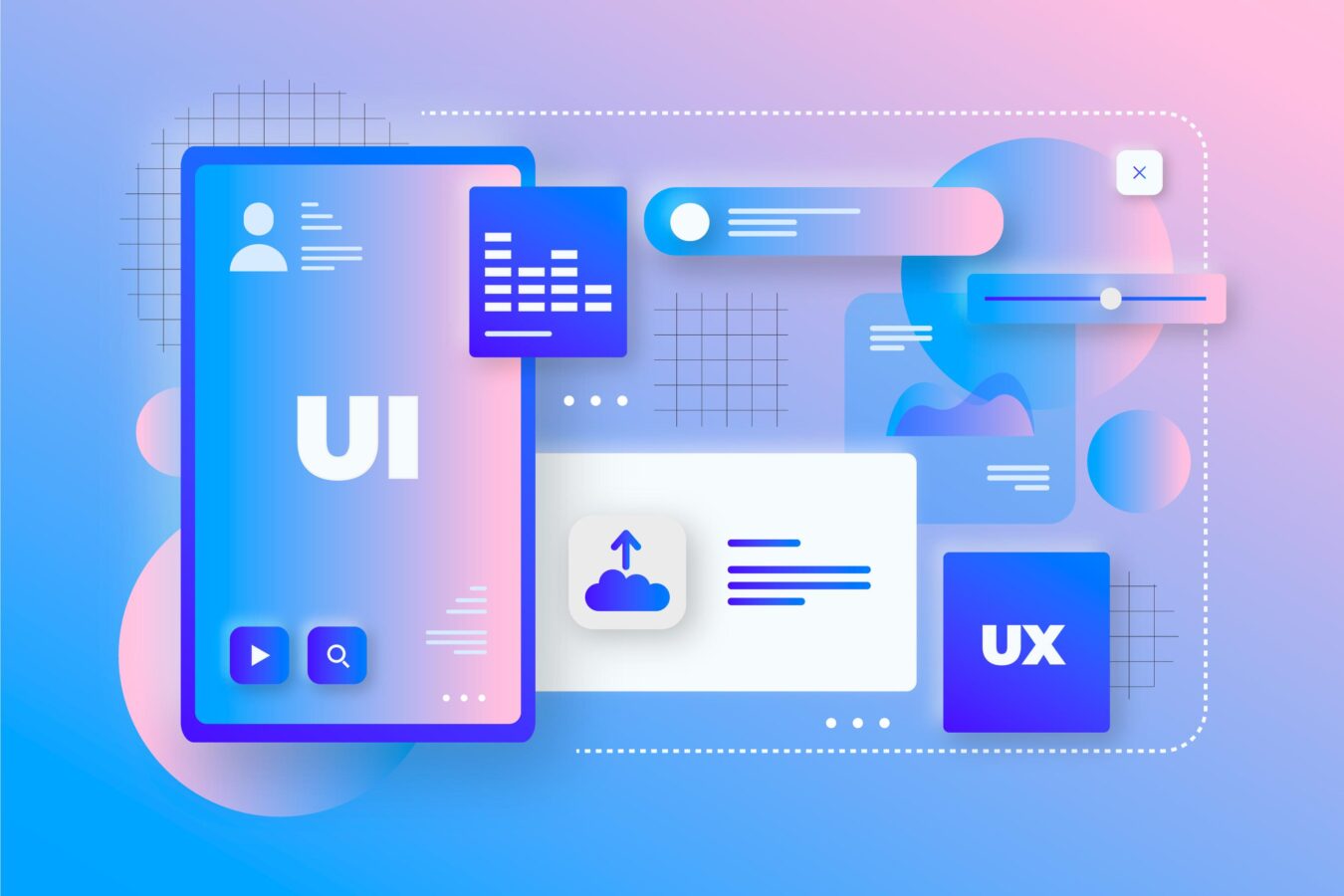In simpler words, mobile app development is the process of creating software for smartphones, tablets, and digital assistants, primarily for the Android and iOS operating systems. Mobile app development mistakes are common errors in judgment, design, or implementation that can derail even the most promising app concepts. These pitfalls range from poor user interface choices to security oversights and can significantly impact an app’s performance, as well as overall success.
Needless to say, in today’s digital-first world, mobile apps have become the cornerstone of business strategies across industries, serving as crucial touchpoints between companies and their customers. The importance of mobile app development cannot be overstated—it’s not just about having a presence on smartphones; it’s about creating engaging experiences that solve real problems and add tangible value to users’ lives.
As a mobile app developer, you must equip yourself with the knowledge to avoid such mistakes or else it can create hurdles in your way to successfully developing an application. In this blog, you will get to know each problem and its solution in order to help you create a mobile application that well and truly resonates with your target audience.
Leveraging the expertise of mobile app developers at Ropstam, here we have delineated some of the common mistakes you must avoid to ensure the success of your application.
- Not focusing on multi-format compatibility
- Neglecting security implementations
- Improper testing
- Lack of performance optimization
- Introducing unnecessary features
- No market strategy
- Lack of objectives
- Overlooking App Store Optimization
- Not giving proper attention to user feedback
- Ignoring analytics
- Neglecting Recent trends
- Cutting corners in app maintenance
- Not getting help from the community
- No planning for future updates
- Unappealing User Interface
1. Not focusing on multi-format compatibility
Multi-format compatibility refers to an app’s ability to function smoothly across various devices and screen sizes. Neglecting this crucial aspect can severely limit your mobile app’s reach and user adoption. That is because in today’s diverse mobile ecosystem, users expect apps to work flawlessly whether on a smartphone, tablet, or even foldable devices.
To prevent this mistake:
- Implement responsive design principles from the outset
- Test your app on multiple devices and screen sizes
- Use flexible layouts and adaptive UI components
- Consider platform-specific design guidelines (iOS vs. Android)
- Regularly update your app to support new device formats as they emerge
2. Neglecting security implementations
Security implementation in mobile apps involves protecting user data, preventing unauthorized access, and safeguarding against potential vulnerabilities. Overlooking this critical aspect can lead to data breaches, loss of user trust, and severe legal consequences, resulting in unprecedented loss to your business.
To enhance app security:
- Implement strong encryption for data storage and transmission
- Use secure authentication methods (e.g., two-factor authentication)
- Regularly update and patch known vulnerabilities
- Conduct thorough security audits and penetration testing
- Comply with relevant data protection regulations (e.g., GDPR, CCPA)
- Educate users about best practices for securing their accounts
3. Improper testing
Improper testing means inadequate or rushed quality assurance processes during mobile application development. This lethal mistake can result in buggy releases, poor user experience, and negative reviews. This means that thorough testing is crucial for identifying and resolving issues before they reach end-users, ensuring a smooth and reliable app experience.
To improve your testing process:
- Develop a comprehensive testing strategy covering all app functionalities
- Utilize both automated and manual testing methods
- Perform rigorous beta testing with a diverse group of users
- Conduct stress tests to evaluate app performance under heavy loads
- Implement continuous integration and continuous delivery (CI/CD) practices
- Regularly update your test cases to cover new features and scenarios
4. Lack of performance optimization
Performance optimization involves, but is not limited to, fine-tuning your moile app to run efficiently, minimizing resource usage, and maximizing speed. If you neglect this aspect, get ready to experience slow load times, battery drain, and frustrated users. In a world where users expect instant gratification, a sluggish app can quickly lead to abandonment, rendering your efforts useless.
To optimize your app’s performance:
- Minimize network requests and optimize data transfer
- Implement efficient caching mechanisms
- Optimize images and media for mobile devices
- Use lazy loading for content-heavy screens
- Regularly profile your app to identify and resolve performance bottlenecks
- Consider using native code for performance-critical features
- Optimize battery usage by minimizing background processes
5. Introducing unnecessary features
Feature bloat occurs when an app is overloaded with functionalities that don’t add significant value to the core user experience. This mistake can lead to a cluttered interface, increased development costs, and reduced app performance. In short, it’s crucial to focus only on key features that align with your app’s primary purpose and user needs.
To avoid feature bloat:
- Conduct user research to identify must-have features
- Execute a feature prioritization system
- Regularly review and potentially remove underused features
- Consider a modular approach, allowing users to enable optional features
- Focus on perfecting core functionalities before adding new ones
6. No market strategy
A beneficial market strategy is a comprehensive plan for positioning and promoting your app in the ever-competitive mobile landscape. Lacking a clear strategy can result in poor user acquisition, ineffective monetization, and ultimately, app failure. A well-defined market strategy is crucial for guiding your app’s development, launch, and growth.
To develop an effective market strategy:
- Conduct thorough market research to understand your target audience
- Analyze competitors and identify your unique selling proposition
- Plan a multi-channel marketing approach (social media, content marketing, ASO)
- Consider partnerships or influencer collaborations to expand reach
- Develop a pricing strategy that aligns with your app’s value and market positioning
- Create a timeline for key marketing activities pre and post-launch
7. Lack of objectives
Having clear objectives means setting specific, measurable goals for your app’s development and performance. Without defined objectives, your app development process can lack direction, leading to wasted resources and misaligned efforts. Clear objectives and goals are pivotal in providing a roadmap for development and a benchmark for measuring success.
To set effective objectives:
- Align app objectives with broader business goals
- Set both short-term and long-term objectives
- Include metrics for user engagement, retention, and revenue
- Regularly review and adjust objectives based on app performance and market changes
- Communicate objectives clearly to all team members involved in development
- Use objectives to guide feature prioritization and resource allocation
8. Overlooking app store optimization
App Store Optimization (ASO) can be defined as the process of improving your app’s visibility and conversion rate in app stores. Neglecting ASO can result in poor discoverability, lower download rates, and missed opportunities for organic growth. Afterall, if your app is not visible to users on Google Play Store or Apple Store, what is the outcome of all your efforts?
To optimize your mobile app store presence:
- Research and use relevant, high-volume keywords in your app title and description
- Create compelling app icons and screenshots that showcase key features
- Write clear, benefit-focused app descriptions
- Encourage and respond to user reviews to improve ratings
- Monitor and analyze ASO performance to continuously refine your strategy
9. Not giving proper attention to user feedback
User feedback is invaluable for understanding how your app is perceived and used in real-world scenarios. Ignoring or not actively seeking user feedback can lead to missed opportunities for improvement and a noticeable disconnect between your app and its users.
To effectively manage user feedback:
- Regularly monitor and respond to app store reviews
- Use analytics tools to track user behavior and identify pain points
- Conduct user surveys and interviews to gather in-depth insights
- Communicate updates and improvements based on user feedback
- Create a feedback loop that informs your development roadmap
10. Ignoring analytics
Analytics provide crucial insights into user behavior, mobile app performance, and overall success metrics. Ignoring analytics means flying blind, making decisions based on assumptions rather than data. With proper use of analytics, you can make informed strategic decisions, identify areas for improvement, and drive growth.
To leverage analytics effectively and impactfully:
- Implement a comprehensive analytics solution from the start
- Define key performance indicators (KPIs) aligned with your objectives
- Track user journey and engagement metrics
- Analyze user retention and churn rates
- Use cohort analysis to understand user behavior over time
- Monitor app performance metrics like crash rates and load times
11. Neglecting recent trends
Neglecting recent trends in mobile app development means failing to stay updated with the latest technological advancements, user preferences, and industry standards in mobile app development. This oversight can lead to an outdated app that fails to meet modern user expectations, potentially resulting in decreased user engagement and app obsolescence.
To stay on top of recent trends:
- Subscribe to reputable tech blogs and newsletters
- Engage with developer communities and forums
- Experiment with emerging technologies (e.g., AR, AI, blockchain)
- Monitor competitor apps for innovative features
- Conduct periodic user research to understand evolving preferences
- Consider implementing trending design patterns and UI/UX principles
- Stay updated with platform-specific guidelines and best practices
12. Cutting corners in app maintenance
Mobile app maintenance involves ongoing efforts to keep your app functioning optimally, secure, and relevant. Cutting corners in this area and not allocating enough budget or resources can lead to deteriorating performance, security vulnerabilities, and user dissatisfaction over time.
To ensure proper mobile app maintenance:
- Establish a regular update schedule for bug fixes and improvements
- Continuously monitor app performance and user feedback
- Allocate resources for ongoing maintenance in your budget
- Use version control and maintain clean, well-documented code for easier updates
- Consider implementing automated monitoring tools for early issue detection
13. Not getting help from the community
The developer community is a vast resource of knowledge, support, and collaboration opportunities. Failing to engage with this community can lead to missed learning opportunities, slower problem-solving, and isolation in the development process.
It would not be an embellishment to claim that with community involvement, you can accelerate development and gain valuable insights. Avail of our mobile app development services and get help from our mobile application developers.
To leverage the developer community:
- Share your knowledge through blog posts or tutorials
- Seek code reviews from peers to improve your app’s quality
- Collaborate with other developers on challenging problems
- Stay active in platform-specific communities (iOS, Android, etc.)
- Consider mentorship opportunities, both as a mentor and mentee
14. No planning for future updates
Failing to plan for future updates means not considering the long-term evolution of your app. This shortsightedness can result in an inflexible codebase, difficulty in adding new features, and inability to adapt to changing user needs or market conditions. As a mobile app developer, remember that planning for the future is essential for sustainable app growth.
To effectively plan for future updates:
- Design a flexible, scalable architecture from the start
- Maintain a feature roadmap aligned with long-term business goals
- Use modular coding practices for easier feature additions
- Plan for backward compatibility when implementing major changes
15. Unappealing user interfaces
A mobile user interface (UI) is the graphical, often touch-sensitive display on a mobile device, like a smartphone or tablet, that enables users to interact with its apps, features, content, and functions. An unappealing user interface can significantly impact user engagement and satisfaction. Poor UI design can lead to confusion, frustration, and, ultimately, app abandonment – this is exactly what you don’t want.
On the contrary, a well-designed, interactive interface is crucial for providing a positive user experience and encouraging continued app usage.
To design an attractive user interface for a mobile application:
- Prioritize consistency in design elements across the app
- Use color psychology to create the right mood and enhance usability
- Ensure proper contrast and readability for all text elements
- Use whitespace effectively to avoid cluttered screens
- Design for different screen sizes and orientations
- Conduct user testing to gather feedback on UI elements
How do mobile app development mistakes impede your success?
In today’s digital times, launching a mobile app can be a game-changing strategy for businesses seeking to expand their reach, engage customers, and unlock new revenue streams. The potential for success is enormous, with more than half of the global population now in possession of smartphones. However, the path to app triumph is fraught with challenges, and even seemingly minor mistakes can have devastating consequences.
What you need to know is that mobile app development mistakes aren’t just minor hiccups; they’re potential roadblocks that can derail your entire project. From concept to launch and beyond, each phase of development presents unique pitfalls that can compromise your app’s performance, user adoption, and, ultimately, your business objectives.
Moreover, the consequences of these errors extend beyond user dissatisfaction. Nowadays, app stores have stringent quality guidelines, and failing to meet these standards can result in your app being penalized or even removed. This not only wastes the resources invested in development but also closes off a vital channel to reach your target audience.
By being aware of common pitfalls such as inadequate market research, insufficient testing, or neglecting platform-specific design principles, you can proactively safeguard your app against potential failures. Remember, whether you are a native app developer or a React Native developer, success isn’t just about having a great idea; it’s about avoiding commonly known mistakes and continuous improvement based on user feedback and market trends.
Partner with Ropstam Solutions for your next mobile app development project
In the crowded digital marketplace, making your name as a mobile app developer might not be as easy as it sounds. To ensure high standards and develop a top-tier application that stands out from the rest, you must avoid common errors and mistakes highlighted in this article.
Boasting an impeccable record and a team of award-winning mobile app developers, we are ready to bring your idea to life. Turn to our experienced mobile app developers and witness your business soar to new heights. Stop your search and give us a call or send an email today.















